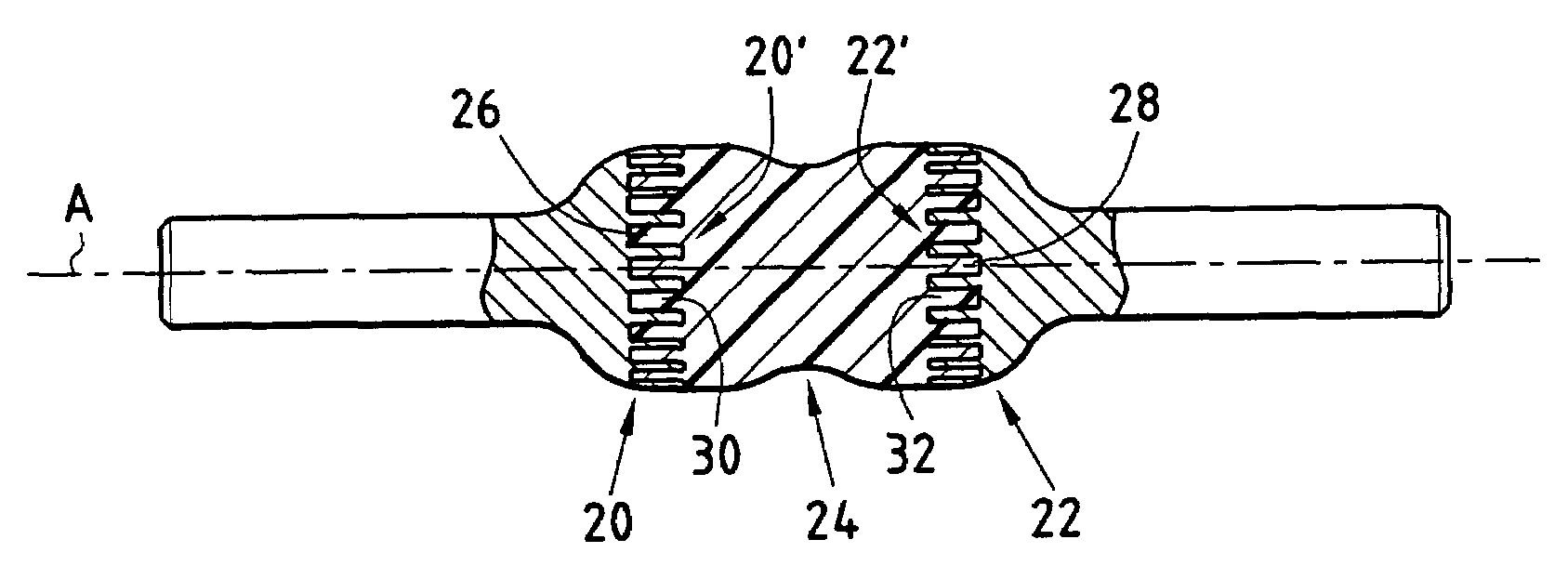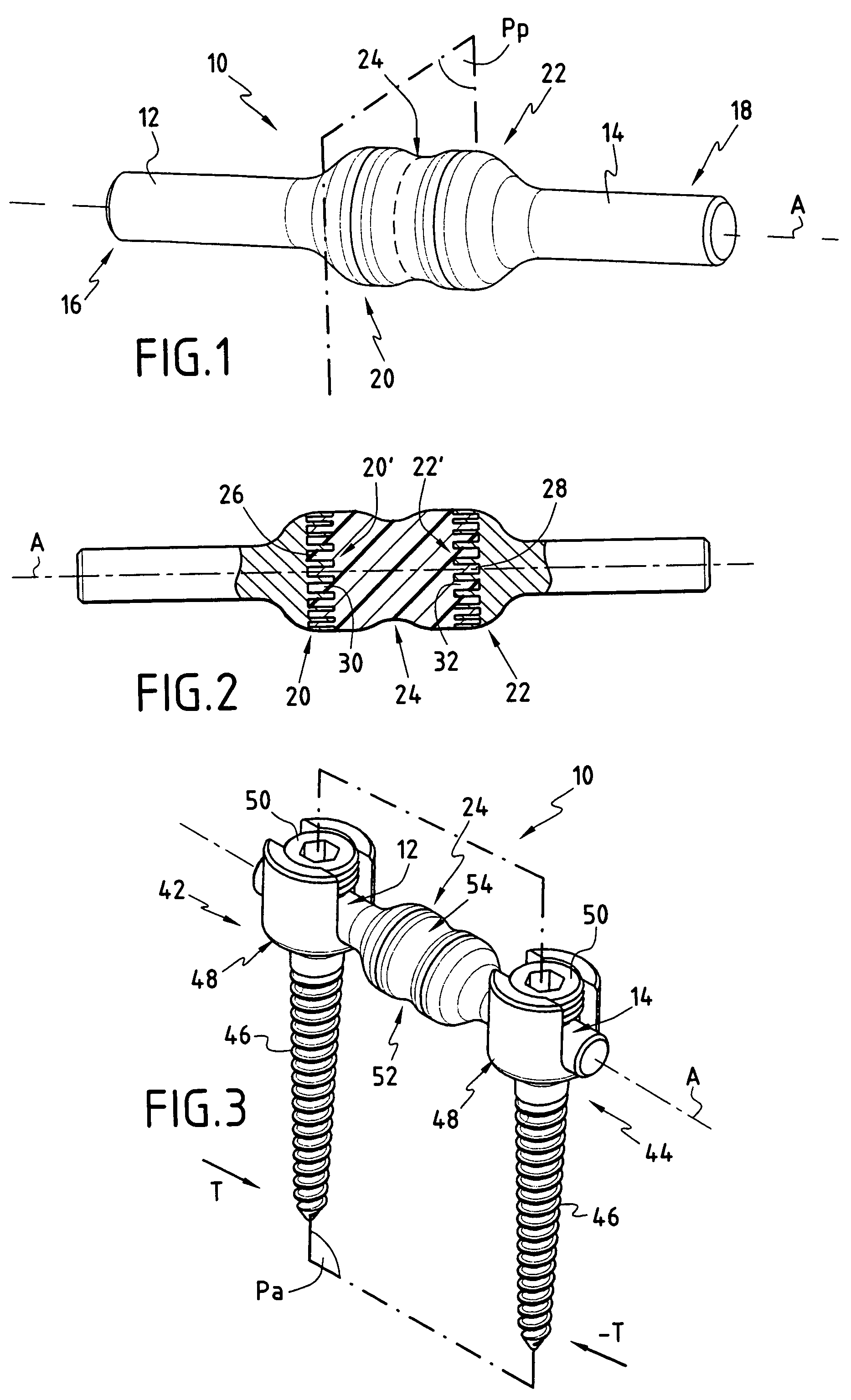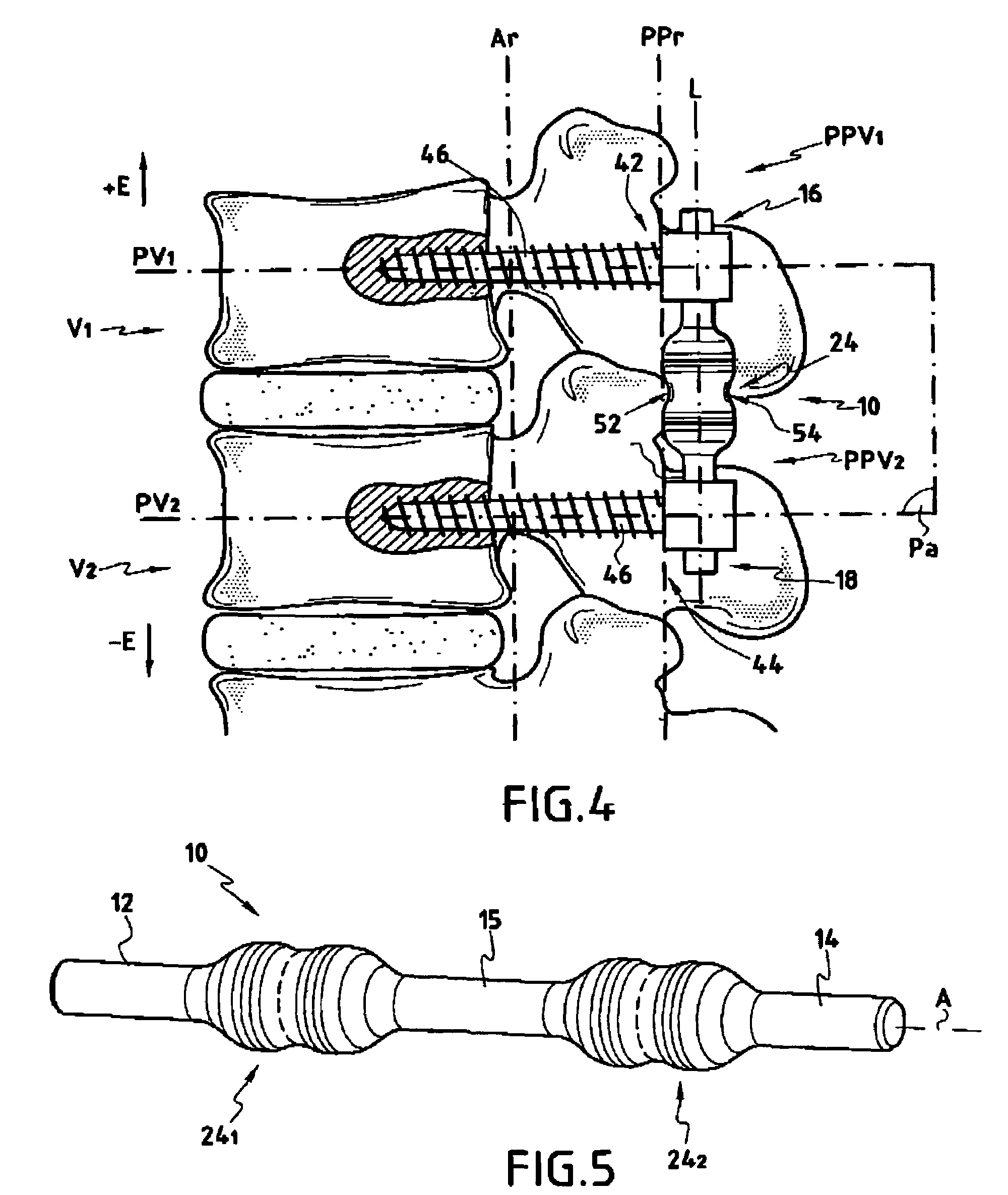Flexible linking piece for stabilising the spine
a flexible linking and spine technology, applied in the field of connecting members, can solve the problems of bending and bending of the spine, and achieve the effect of reducing the risk of fracture and bending
- Summary
- Abstract
- Description
- Claims
- Application Information
AI Technical Summary
Benefits of technology
Problems solved by technology
Method used
Image
Examples
Embodiment Construction
[0025]The various portions of a connecting member of the invention are described initially with reference to FIG. 1.
[0026]The connecting member 10 has two cylindrical rigid parts 12 and 14. Each rigid part 12, 14 has a fixing, first portion 16, 18 and a fastening, second portion 20, 22 forming an enlargement. The facing fastening portions 20 and 22 are connected together by a connecting body 24 so that the rigid parts 12 and 14 are in axial alignment. The connecting member 10 is therefore circularly symmetrical about the axis A.
[0027]How the two rigid parts 12 and 14 are fastened together is described below with reference to FIG. 2.
[0028]The connecting body 24 is a plastics material body obtained by polymerization. The material of the body is chosen from materials which are more elastically deformable than the material of said rigid parts 12, 14 and, most importantly, whose elastic properties are of the same order of magnitude as those of the posterior ligaments that hold the spine ...
PUM
 Login to View More
Login to View More Abstract
Description
Claims
Application Information
 Login to View More
Login to View More - R&D
- Intellectual Property
- Life Sciences
- Materials
- Tech Scout
- Unparalleled Data Quality
- Higher Quality Content
- 60% Fewer Hallucinations
Browse by: Latest US Patents, China's latest patents, Technical Efficacy Thesaurus, Application Domain, Technology Topic, Popular Technical Reports.
© 2025 PatSnap. All rights reserved.Legal|Privacy policy|Modern Slavery Act Transparency Statement|Sitemap|About US| Contact US: help@patsnap.com



